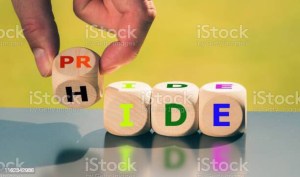
Australia has an early childhood education and care crisis. Actually, there’s a number of crises.
Most parents and caregivers can’t afford not to work. Ironically, early childhood education can be so expensive, it makes working seem pointless.
There’s more.
Many Australian parents are finding it almost impossible to find spots for their children without waiting for a significant period of time.
Emma Douglas from Broome, Western Australia, told ABC’s 7.30:
[I’d] be posting on the Broome babysitting Facebook pages begging, begging, for a babysitter that could fit in with the days that I needed.
Douglas eventually gave up her job due to lack of available childcare. Fortunately after being in Broome for two years, Douglas was able to find a childcare place.
She said the childcare system: “doesn’t feel fair”.
Finland’s childcare system

Unlike Australia’s private childcare system, Finland’s childcare centres are run by local government. It’s also considered a right.
Professor of education at the University of Jyaskyla, Heidi Harji – Luukkainen explained:
So, in Finland, we have a subjective right for children to get early childhood education, which means that the parents are guaranteed placement for the child in early childhood education whenever there is a need.
Additionally, childcare fees aren’t blanket amounts. They’re dependent on a family’s income. Fees can range from A$50 to A$500 a month. In Australia, the system is a bit more complex.
Austalian governments have introduced childcare subsidies. In mid – to – late 2020, the Liberal National Party (LNP), ended JobKeeper for early childhood educators and rolled back free childcare for working families.
Lack of access
Another issue that Australian parents face is finding an early childhood education centre nearby.
Many parents, especially in Australia’s capital cities have to travel almost half an hour to take their child/ren to childcare. This creates stress on both the parents and children. They often have to leave home early in the morning and get home in the evening. Talk about a busy day!
In contrast, Finland has numerous early childhood education centres that are near enough for families.
The history of Finland’s early childhood education system
According to Jacobin, Finland’s successful early childhood education system didn’t happen overnight.
The first kindergarten was established in the capital, Helsinki in 1888. This was established for working -class families. Four years later, education for early childhood teachers began. Since 1995, most Finnish early childhood educators hold a degree. In Australia, the minimum qualification to work in early childhood education is Certificate III.
In 1919, Finnish municipalities were granted the right to establish early childhood education centres. Only a few took the offer. However, after World War Two, early childhood education was formalised.
In 1973, Finland’s government introduced the Child Daycare Act. This made childcare a right for Finnish children. This came about because childcare was only accessible to families who could afford or access it geographically (sound familiar?)
So, yes, Australia can learn from Finland. It’s all about priorities. Early childhood education needs to be considered a right to all children, not just a privilege for some.
What do you think? Should Australia try to adopt Finland’s esrly childhood education system? Feel free to leave your thoughts in the comments.










